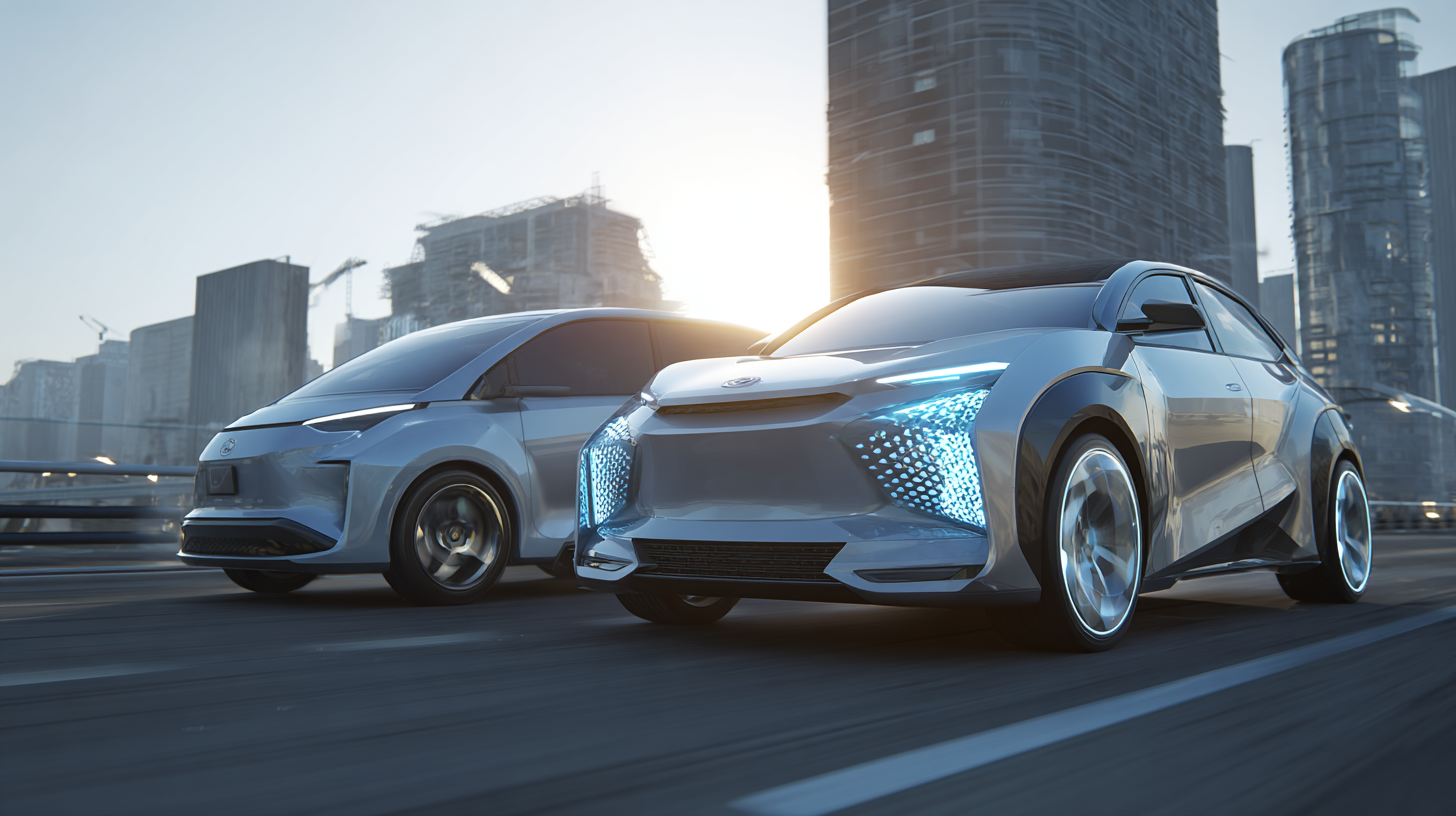As the world increasingly prioritizes sustainable transportation solutions, hybrid vehicles emerge as a pivotal innovation in reducing carbon emissions and promoting energy efficiency. According to a recent report from the International Energy Agency (IEA), hybrid vehicles accounted for nearly 25% of global electric vehicle sales in 2022, signifying a substantial shift in consumer preferences and automotive trends. The combination of an internal combustion engine with an electric powertrain allows for greater fuel efficiency and reduced emissions, making hybrid vehicles a crucial element in the transition towards a greener future. Moreover, the market for these vehicles is projected to grow exponentially, with analysts estimating that hybrids could represent over 30% of global vehicle sales by 2030. This shift not only reflects changing consumer attitudes but also highlights the automotive industry's commitment to sustainability, presenting a promising avenue for reducing reliance on fossil fuels while meeting the growing demand for cleaner transportation alternatives.

Hybrid vehicles are at the forefront of the transition towards sustainable transportation, offering a unique blend of efficiency and reduced environmental impact. By combining traditional internal combustion engines with electric propulsion, hybrid cars significantly lower greenhouse gas emissions compared to their purely gasoline-powered counterparts. This dual system allows for improved fuel economy and fewer pollutants, responding directly to the growing need for cleaner air in urban environments.

Moreover, the benefits of hybrid vehicles extend beyond environmental considerations. They provide drivers with enhanced performance and reliability, often equipped with regenerative braking technology that captures energy usually lost during braking. This not only boosts energy efficiency but also contributes to lower operating costs over time. With the increasing availability of hybrid models across various vehicle categories, consumers have more sustainable choices than ever, paving the way for a greener future in transportation.
Hybrid vehicles are at the forefront of transforming sustainable transportation, driven by key technologies that enhance efficiency and reduce emissions. Innovations such as regenerative braking systems and advanced battery management have significantly improved the performance of hybrid cars. According to a report by the International Energy Agency (IEA), hybrid electric vehicles accounted for over 20% of global vehicle sales in 2022, indicating a growing shift towards greener alternatives. Moreover, advancements in plug-in hybrid technology have expanded the driving range and reduced dependency on fossil fuels, making these vehicles more appealing to consumers.
One of the most notable innovations is the development of high-capacity lithium-ion batteries, which have become cheaper and more efficient over the past decade. Research from Bloomberg New Energy Finance shows that lithium-ion battery prices have dropped by nearly 89% since 2010, making hybrid vehicles more accessible to a broader audience. Additionally, automakers are increasingly integrating artificial intelligence (AI) to optimize energy consumption, providing real-time data to drivers for improved efficiency.
**Tip:** For those considering a hybrid vehicle, look for models with robust battery warranties and strong manufacturer support. This ensures long-term value and performance, protecting your investment in sustainable technology. Another tip is to take advantage of government incentives; many regions offer tax credits or rebates for purchasing hybrid vehicles, further enhancing their affordability.
Hybrid vehicles are increasingly becoming a pivotal solution in the evolution of sustainable transportation, particularly as they offer a unique blend of traditional combustion engines and electric power. This duality enables hybrid models to deliver superior fuel efficiency compared to conventional vehicles while still possessing the range and performance that many drivers desire. As the global automatic transmission market is projected to grow from $21.95 billion in 2025 to $43.9 billion by 2032, at a compound annual growth rate (CAGR) of 10.4%, there's no denying the rising demand for such innovative technologies.
When comparing hybrids to traditional gasoline vehicles and fully electric cars, hybrids stand out for their practicality. For instance, they provide peace of mind for those concerned about range anxiety associated with electric vehicles. As seen in the latest trends in New Zealand's automotive market, mid-size SUVs are gaining traction for family use, combining ample space with modern hybrid technology, making them an attractive option for consumers.
**Tips:** If you're considering making the switch to a hybrid vehicle, think about your driving habits. For longer commutes, a hybrid might save you on fuel costs, while urban drivers may benefit from the electric capabilities. Also, keep an eye on upcoming models that include extended-range options, as they can offer even more versatility.
This chart compares the fuel efficiency (in MPG) and average emissions (in grams CO2/km) of hybrid vehicles, traditional gasoline vehicles, and electric vehicles.
As hybrid vehicles gain traction in the automotive market, the adaptation of infrastructure becomes crucial for their widespread acceptance and effectiveness. Cities around the world are beginning to realize the importance of integrating charging stations and maintenance facilities specifically designed for hybrid technology. This evolution not only paves the way for smoother operations of hybrid vehicles but also encourages consumers to transition from traditional gasoline-powered cars to more sustainable options.
To effectively support the rise of hybrid transportation, urban planners and policymakers must prioritize investment in the necessary infrastructure. This includes strategically placing charging points in both urban and suburban areas, ensuring accessibility for all drivers. Additionally, public transport systems can be upgraded to incorporate hybrid buses and shuttles, which will enhance overall emissions reduction efforts while providing more eco-friendly alternatives for commuters. By fostering an environment that prioritizes hybrid technology, cities can play a pivotal role in shaping a sustainable transportation future.
The hybrid vehicle market is poised for significant growth, driven by increasing environmental awareness and advancements in technology. According to a report by the International Energy Agency (IEA), sales of hybrid electric vehicles (HEVs) surged to 5.5 million units in 2022, marking a 20% increase from the previous year. This trend reflects a broader movement towards sustainable transportation solutions as governments worldwide implement stricter emissions regulations and consumers seek greener alternatives.
As we look to the future, experts predict that the hybrid vehicle market will continue to expand, with a projected compound annual growth rate (CAGR) of over 15% from 2023 to 2030. Factors contributing to this robust growth include advancements in battery technology, enhanced fuel efficiency, and the deployment of smart mobility solutions. Brands are also focusing on developing plug-in hybrid electric vehicles (PHEVs) that offer greater range and flexibility, appealing to a wider range of consumers.
**Tip:** When considering a hybrid vehicle, pay close attention to the vehicle's electric range and fuel efficiency ratings. Researching various models can help you determine which hybrid option is best suited for your lifestyle and commuting needs.
**Tip:** Keep an eye on government incentives and rebates for hybrid vehicle purchases. These can significantly reduce the initial investment and enhance the overall value of your sustainable transportation choice.

